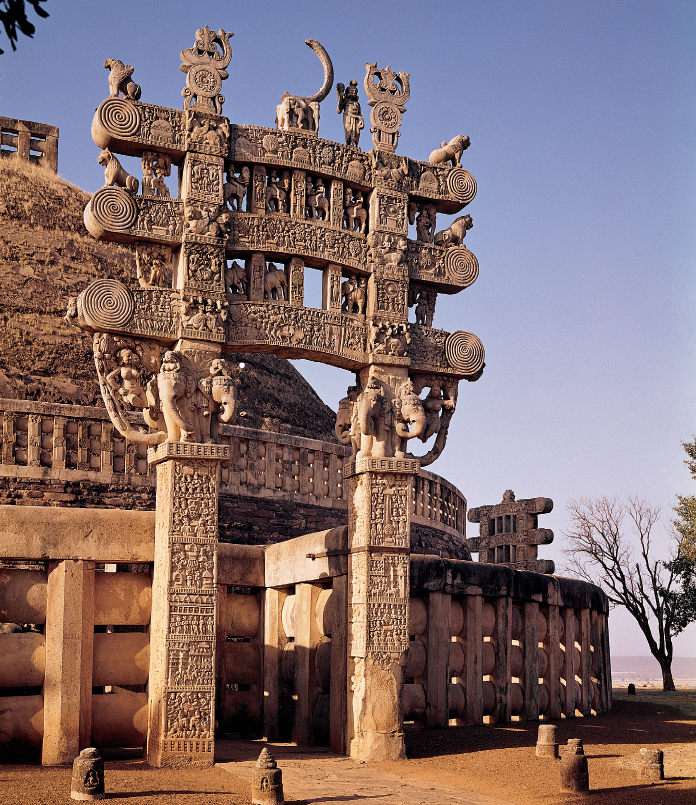The Reign of Ashoka, ca. 269–232 B.C.E.
Chandragupta’s grandson Ashoka proved to be one of India’s most remarkable figures. The era of Ashoka was enormously important in the religious history of the world, because Ashoka embraced Buddhism and promoted its spread beyond India.
As a young prince, Ashoka served as governor of two prosperous provinces where Buddhism flourished. At the death of his father about 274 B.C.E., Ashoka rebelled against his older brother, who had succeeded as king, and after four years of fighting won his bid for the throne. Crowned king, Ashoka ruled intelligently and energetically.
In the ninth year of his reign, 261 B.C.E., Ashoka conquered Kalinga, on the east coast of India. In a grim and savage campaign, Ashoka reduced Kalinga by wholesale slaughter. Instead of exulting like a conqueror, however, Ashoka was consumed with remorse and revulsion at the horror of war. He embraced Buddhism and used the machinery of his empire to spread Buddhist teachings throughout India. He supported the doctrine of not hurting humans or animals that was then spreading among religious people of all sects in India. Two years after his conversion, he undertook a 256-
Ashoka felt the need to protect his new religion and to keep it pure. He warned Buddhist monks that he would not tolerate schism — divisions based on differences of opinion about doctrine or ritual. According to Buddhist tradition, a great council of Buddhist monks was held at Pataliputra, where the earliest canon of Buddhist texts was codified. At the same time, Ashoka honored India’s other religions, even building shrines for Hindu and Jain worshippers.

Despite his devotion to Buddhism, Ashoka never neglected his duties as emperor. He tightened the central government of the empire and kept a close check on local officials. He built roads and rest spots to improve communication within the realm. These measures also facilitated the march of armies and the armed enforcement of Ashoka’s authority.
Ashoka directly administered the central part of the Mauryan Empire, focusing on Magadha. Beyond it were four large provinces under princes who served as viceroys, each with its own sets of smaller districts and officials. The interior of south India was described as inhabited by undefeated forest tribes. Farther south, along the coasts, were peoples that Ashoka maintained friendly relations with but did not rule, such as the Cholas and Pandyas. Relations with Sri Lanka were especially close under Ashoka.
Ashoka ruled for thirty-
>QUICK REVIEW
What steps did Ashoka take to strengthen and consolidate Mauryan rule?